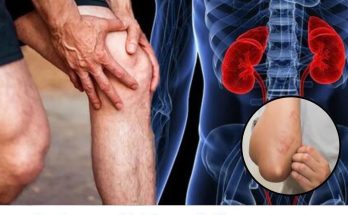
How to naturally repair a cavity. Keep these tips in mind to avoid visiting the dentist
Cavities are a common problem that most people face. They are bothersome and can cause real discomfort.
They appear when the enamel, the hard layer of the teeth, is destroyed. Cavities can be treated at home, naturally, but only if they are in the early stages.
How to naturally repair cavities at home The best way to repair a cavity without going to the dentist is to give your body the minerals it needs. Cavities appear because we don’t have enough minerals in our diet.
If you want to naturally heal a cavity, make sure to consume seafood, organic milk, vegetables, and coconut oil. Avoid as much as possible foods rich in phytic acid: beans, nuts, cereals, and seeds.
It’s very important to reduce the consumption of processed foods, as these disrupt blood sugar levels.
A balanced diet, low in sugars and starch. If you do consume foods containing sugars and starch, try to do so during meals and not between meals, to limit teeth exposure to the acids produced by t
The idea is to change your diet and take better care of your oral health. Prevention is key, but it’s also true that an early cavity can be treated at home. This is not the case for advanced cavities that definitely require a visit to the specialist.
The appearance of cavities is influenced by our lifestyle: what we eat, how we care for our teeth, whether the drinking water is sufficiently fluoridated, and which toothpaste we use. You should know that genetics also play a role in the formation of dental cavities.
Cavities are a serious condition. If left untreated, cavities can destroy the teeth and the soft tissue inside them, causing dental abscesses, areas of infection at the root tip.
A balanced diet, low in sugars and starch. If you do consume foods containing sugars and starch, try to do so during meals and not between meals, to limit teeth exposure to the acids produced by t
The idea is to change your diet and take better care of your oral health. Prevention is key, but it’s also true that an early cavity can be treated at home. This is not the case for advanced cavities that definitely require a visit to the specialist.
The appearance of cavities is influenced by our lifestyle: what we eat, how we care for our teeth, whether the drinking water is sufficiently fluoridated, and which toothpaste we use. You should know that genetics also play a role in the formation of dental cavities.
Cavities are a serious condition. If left untreated, cavities can destroy the teeth and the soft tissue inside them, causing dental abscesses, areas of infection at the root tip.
Getting rid of cavities at home
Many home treatments are based off of a study Trusted Source from the 1930s that suggested that cavities are caused by lack of vitamin D in the diet. In this study, kids who added vitamin D to their diets showed a reduction in cavities. However, those who added vitamin D while also removing grain products from their diets had the best results. This is possibly because grains can stick to the teeth.
Not getting enough vitamin D may make teeth more susceptible to cavities, but we now understand that this is only a part of the puzzle. Other risk factors for cavities include:
dry mouth or having a medical condition that reduces the amount of saliva in the mouth





Once a cavity has penetrated the dentin, you won’t be able to get rid of it at home. The following home remedies might help prevent cavities or treat “pre-cavities” by remineralizing weakened areas of your enamel before a cavity develops:
1. Sugar-free gum
Chewing sugar-free gum after meals has been shown in clinical trials to help remineralize enamel. Gum containing xylitol has been researched extensively for its ability to stimulate saliva flow, raise the pH of plaque, and reduce S. mutans, but long-term studies are needed.
2. Vitamin D
Vitamin D is important to help absorb calcium and phosphate from the food you eat. Studies show an inverse relationship between eating foods high in vitamin D and calcium, like yogurt, and cavities in young children. You can get vitamin D from dairy products, like milk and yogurt. You can also get vitamin D from the sun.
3. Brush with fluoride toothpaste
Fluoride plays an important role in preventing cavities and remineralizing enamel. Extensive research Trusted Source has been done to show that regularly brushing your teeth with a fluoride toothpaste prevents cavities.
Most studies have been conducted either in children or adolescents, so more research is needed in adults and the elderly.
4. Cut out sugary foods
This is the cavity remedy that no one likes to hear — stop eating so much sugar. The World Health Organization Trusted Source says that eating sugar is the most important risk factor for cavities. They recommend reducing your sugar intake to less than 10 percent of your total caloric intake for the day.
If you’re going to eat sugar, try not to snack on sugary foods throughout the day. Once the sugar is gone, your enamel has a chance to remineralize. But if you are constantly eating sugar, your teeth don’t get the chance to remineralize.
5. Oil pulling
Oil pulling is an ancient practice that involves swishing around an oil, like sesame or coconut, in your mouth for about 20 minutes, then spitting it out. Claims that oil pulling “removes toxins” from the body aren’t backed up by evidence. But a small, triple-blind, placebo-controlled clinical trial showed that oil pulling with sesame oil reduces plaque, gingivitis, and the number of bacteria in the mouth just as effectively as chlorhexidine mouthwash. Larger studies are needed to confirm these effects.
6. Licorice root
Extracts from the Chinese licorice plant (Glycyrrhiza uralensis) can combat the bacteria responsible for dental cavities, according to at least one study.
One researcher has taken this to the next level and created a licorice lollipop to help fight tooth decay. Pilot studiesTrusted Source using licorice extract in a lollipop showed they were effective in significantly reducing S. mutans in the mouth and preventing cavities. Larger and more long-term studies are needed.
Seeing a dentist
Many dental problems, even deep cavities, develop without any pain or other symptoms. Regular dental checkups are the best way to catch a cavity before it gets worse. Early diagnosis means easier treatment.
Treatment at the dentist for a cavity may include:
Fluoride treatments: Professional fluoride treatments contain more fluoride than toothpaste and mouth rinses you can buy at a store. If stronger fluoride is needed daily, your dentist may give you a prescription.
Fillings: Fillings are the main treatment when a cavity has progressed beyond the enamel.
Crowns: A crowns is a custom-fitted covering or “cap” that is placed over the tooth to treat extensive decay.
Root canals: When tooth decay reaches the inner material of your tooth (pulp), a root canal may be necessary.



